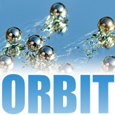Ethical issues in human reproduction: Difference between revisions
(Created page with "{{Rinfo |subject= |resourcenumber= |age= |title= |content= |format= |strategy= |additional resources= |useful information= |related resources= |other= |resources= }}") |
No edit summary |
||
| Line 1: | Line 1: | ||
{{Draft}} | |||
{{Rinfo | {{Rinfo | ||
|subject= | |subject= | ||
| Line 6: | Line 8: | ||
|content= | |content= | ||
|format= | |format= | ||
|strategy= | |strategy= This lesson outline stimulates A-level students to discuss and increase their awareness of the bioethical issues involved in human reproduction, and to develop their reasoning skills. Background texts and open-ended questions about human reproduction, contraception and IVF are provided as a stimulus. Small group discussion about these topics, post-it notes, and case studies are used with the aim of getting students to reason – to articulate and justify their opinions, and to compare and evaluate competing views. A table is used for recording. Finally, whole class discussion synthesises the ideas emerging and encourages students to consider changing their positions or adding additional issues to the table. | ||
|additional resources= | |additional resources= | ||
|useful information= | |useful information= | ||
Revision as of 09:31, 30 April 2012
Teaching approach. This lesson outline stimulates A-level students to engage in discussion(ta), develop their reasoning(ta) skills and increase their awareness of the bioethical(topic) issues involved in human reproduction.
Background texts and open-ended questioning(ta) about human reproduction, contraception and IVF are provided as the stimulus. Small group discussion about these topics, writing on post-it notes, and reading case studies aim to get students reasoning(ta) to justify their opinions, and to compare and evaluate competing views. Finally, whole class(ta) discussion synthesises the emerging ideas and encourages students to consider changing their positions or adding additional issues to a recording table. (edit)
| Resource details | |
| Title | |
| Topic | [[Topics/Ethics|Ethics]], [[Topics/Human reproduction|Human reproduction]] |
| Teaching approach | [[Teaching Approaches/Questioning|Questioning]], [[Teaching Approaches/Whole class|Whole class]], [[Teaching Approaches/Reasoning|Reasoning]], [[Teaching Approaches/Discussion|Discussion]]
|
| Subject | [[Resources/Science|Science]] |
| Age of students / grade | [[Resources/KS5|KS5]], [[Resources/Secondary|Secondary]]
|

